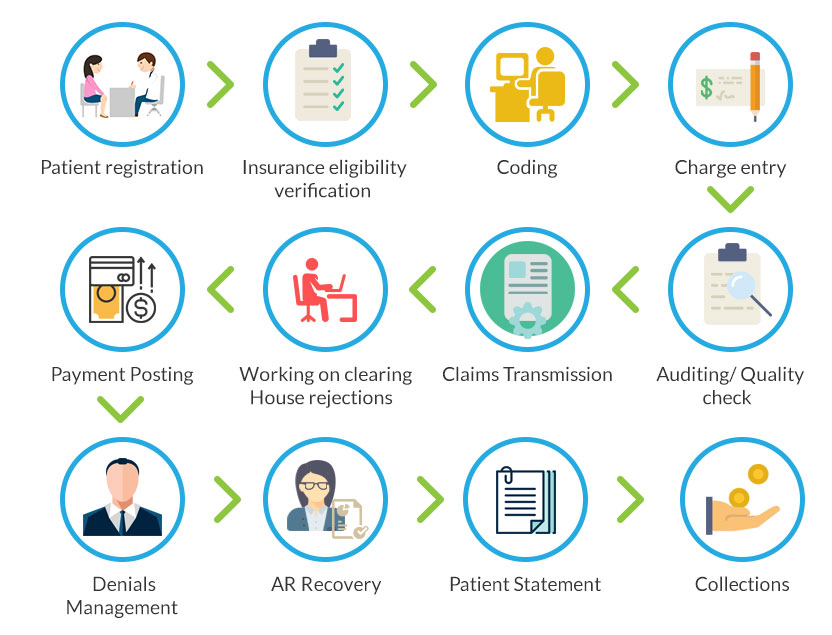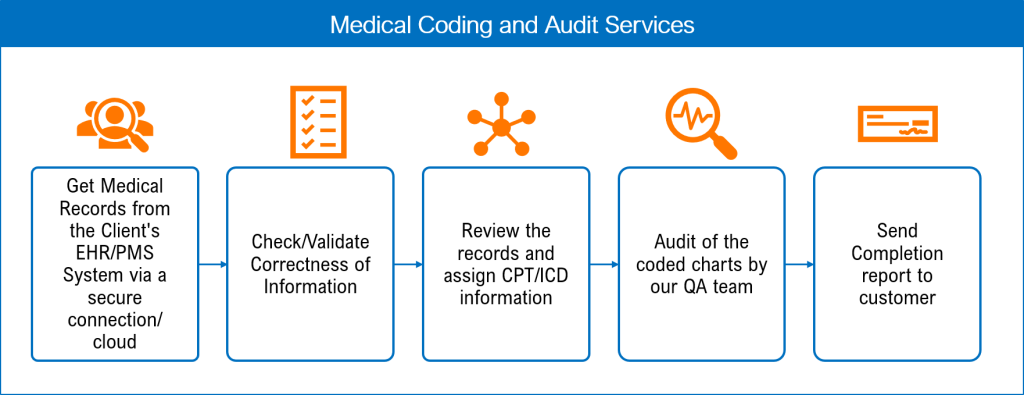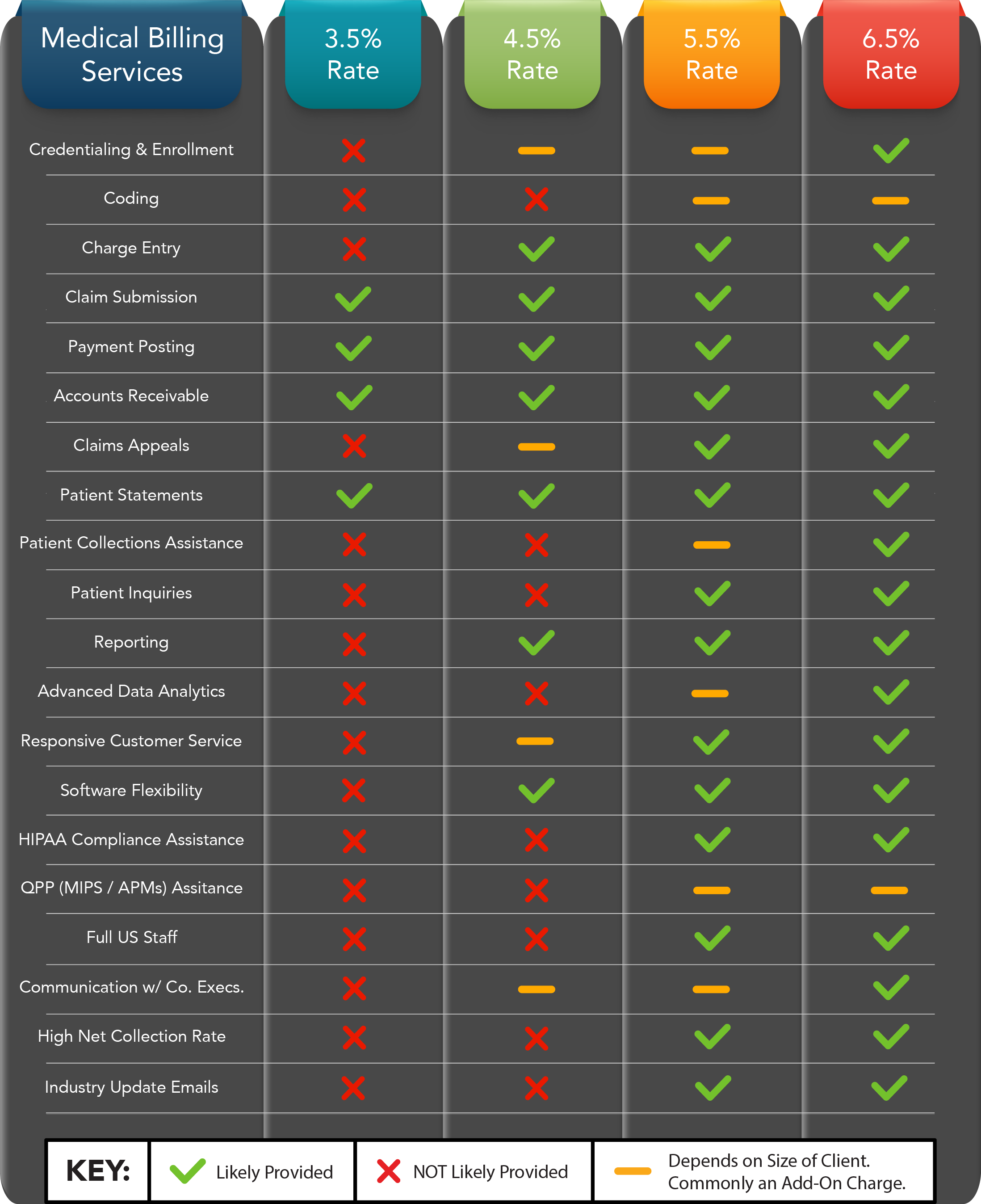Introduction
Determining charges for medical coding services can be a complex task. As a healthcare provider or medical coding professional, it is crucial to understand how to accurately calculate and determine charges for the services rendered. This article will provide you with valuable information on how to determine your charges for medical coding services.
What are medical coding services?
Medical coding services involve the translation of medical procedures, diagnoses, and treatments into universally recognized codes. These codes are used for various purposes, such as billing, insurance claims, and statistical analysis. Accurate medical coding is essential for healthcare providers to receive proper reimbursement and ensure compliance with coding guidelines.
Importance of medical coding services
Proper medical coding plays a vital role in the healthcare industry. It helps in ensuring accurate patient records, efficient billing processes, and compliance with regulatory requirements. Effective medical coding also facilitates communication among healthcare professionals, enables accurate data reporting, and assists in research and analysis.
Determining the charges for medical coding services requires a careful consideration of factors such as the complexity of the procedure, the expertise of the coding professional, and the current market rates. By accurately assessing these factors, you can ensure fair compensation for your services while maintaining competitive pricing.
In the following sections, we will discuss various factors that should be considered when determining charges for medical coding services. We will also provide practical tips and guidelines to help you navigate this process effectively.
This image is property of media.licdn.com.
Factors to consider when determining charges for medical coding services
Determining the charges for medical coding services is an essential step for healthcare providers and medical coding professionals. It involves evaluating various factors to ensure fair compensation for the services offered. Here are some key factors to consider when determining charges for medical coding services.
Types of services provided
The type of medical coding services offered is an important factor to consider when determining charges. Different services require different levels of expertise and resources. For instance, basic coding services may have a lower charge compared to specialized services such as complex surgical procedures or coding for specific medical specialties.
Level of complexity
The complexity of the coding tasks also plays a significant role in determining charges. Coding for simple diagnoses or procedures may require less time and effort, leading to lower charges. On the other hand, complex cases that involve multiple diagnoses or intricate procedures may require more time and expertise, resulting in higher charges.
Volume of services
The volume of coding services provided can impact the charges as well. Healthcare providers that require a high volume of coding work may be eligible for discounted rates, while smaller practices with less volume may be charged according to their specific needs.
Geographical location
The geographical location of the healthcare provider can also influence the charges for medical coding services. The cost of living and market rates may vary from one region to another, leading to different pricing structures.
Specialty or industry focus
Medical coding services can vary depending on the healthcare provider’s specialty or industry focus. Specialized coding services such as radiology or anesthesia coding may require additional training and expertise, which can result in higher charges.
By considering these factors, you can determine fair and appropriate charges for medical coding services, ensuring that both healthcare providers and medical coding professionals are compensated fairly for their services.
Methods of determining charges for medical coding services
One of the key aspects to consider when providing medical coding services is how to determine your charges. There are several different methods you can use, each with its own set of advantages and considerations. In this section, we will explore four common methods for determining charges: hourly rate, per procedure basis, percentage of collections, and fixed fee.
Hourly rate
Charging based on an hourly rate is a straightforward approach. It allows you to calculate your charges by tracking the time spent on each coding task. This method is beneficial for both parties involved, as it provides transparency and allows you to easily adjust for any additional work required.
Per procedure basis
Another commonly used method is charging on a per procedure basis. This approach involves assigning a specific fee for each medical coding procedure. It simplifies the billing process and allows for easy calculation of charges. However, it is essential to ensure that the assigned fees accurately reflect the complexity and intensity of each procedure.
Percentage of collections
Charging a percentage of collections is a method commonly used by medical coding service providers. With this approach, your charges are based on a percentage of the total amount collected by the healthcare provider. It aligns your interests with the financial success of the provider, motivating you to ensure accurate and efficient coding.
Fixed fee
Lastly, a fixed fee arrangement involves charging a predetermined amount for a set period. This method provides predictability and stability for both parties, as the charges remain fixed regardless of the volume or complexity of the coding work.
When determining how to charge for your medical coding services, it is crucial to consider the unique needs and circumstances of your clients. Each method has its own benefits and limitations, so it is important to choose the approach that best aligns with your business model and the expectations of your clients.
Understanding the different fee structures
Determining the charges for medical coding services can be a complex task. As a healthcare provider, it is essential to find a fee structure that suits your practice’s needs and goals. There are various fee structures available, each with its own advantages and disadvantages. In this section, we will explore four common fee structures and discuss their pros and cons.
Pros and cons of hourly rate
When charging on an hourly rate basis, you are paid for the amount of time spent coding. This fee structure allows for flexibility and can be beneficial if you are starting a new practice or have varying coding needs. However, it may be challenging to estimate the final cost accurately, and unexpected delays can result in higher charges.
Advantages and disadvantages of per procedure basis
A per procedure fee structure involves charging for each individual service or procedure performed. This structure provides transparency and simplicity in billing, making it easier for you and your patients to understand the charges. However, it may not account for the complexity or intensity of specific procedures, and you may receive lower payments for time-consuming or intricate coding tasks.
Benefits and limitations of percentage of collections
The percentage of collections fee structure is based on a percentage of the total amount collected from claims. This structure aligns the interests of the coding service provider with your practice’s financial success. However, it may result in higher charges if your practice’s collections increase, and it can be challenging to negotiate a suitable percentage.
Pros and cons of fixed fee structure
A fixed fee structure involves charging a set amount for coding services, regardless of the number or complexity of procedures. This structure provides predictability and stability in billing, allowing you to budget more effectively. However, it may not account for fluctuations in coding volume, resulting in overpayment during slower periods or underpayment during busier times.
understanding the different fee structures for medical coding services is crucial for determining the most appropriate option for your practice. Each structure has its own advantages and disadvantages, so it is essential to assess your practice’s needs and goals before making a decision. By considering factors such as flexibility, transparency, financial alignment, and stability, you can determine the most suitable fee structure for your medical coding services.

This image is property of www.medbillingexperts.com.
Considerations when setting charges for medical coding services
Determining how to charge for medical coding services can be a complex task that requires careful consideration of various factors. By taking into account market analysis, competitor rates, cost of operation, profit margin goals, and client expectations, you can establish a pricing structure that is fair and aligns with your business objectives.
Market analysis
Conducting a thorough market analysis is essential when setting charges for medical coding services. This involves researching the demand for such services in your target market and identifying the prevailing rates charged by other providers. By understanding the market dynamics, you can position your pricing strategy accordingly.
Competitor rates
Another key consideration is competitor rates. It is crucial to be aware of what other medical coding service providers are charging to ensure that your charges are competitive. While undercutting your competition may attract clients, it is also important to ensure that your charges cover your costs and allow for a reasonable profit margin.
Cost of operation
Calculating the cost of operating your medical coding business is essential for determining your charges. Consider factors such as employee salaries, overhead expenses, software and technology costs, and other resources required to deliver quality coding services. These costs should be factored into your pricing strategy to ensure that your charges are both sustainable and profitable.
Profit margin goals
Setting profit margin goals is important for determining your charges. Consider the level of profitability you desire and determine the markup percentage that allows you to achieve this objective. Keep in mind that your charges should reflect the value you provide to your clients while also covering your costs and generating a reasonable profit.
Client expectations
Understanding client expectations is crucial when determining your charges. Consider the types of clients you serve, their budgets, and the value they place on your services. By aligning your charges with client expectations, you can attract and retain a loyal customer base.
Remember, determining charges for medical coding services requires a comprehensive evaluation of several factors. By considering market analysis, competitor rates, cost of operation, profit margin goals, and client expectations, you can establish a fair and sustainable pricing structure that supports the growth and success of your medical coding business.
Negotiating charges with clients

Presenting the value of services
When determining your charges for medical coding services, it is important to effectively communicate the value of your work to your clients. Explain how your expertise can accurately code medical procedures, resulting in improved accuracy of billing and increased revenue for their practice. Emphasize the importance of correct coding for compliance purposes and reducing the risk of audit penalties.
Explaining the fee structure
To avoid confusion and ensure transparency, clearly outline your fee structure. Break down your charges based on the complexity of the coding task, time involved, and any additional services provided. This helps clients understand what they are paying for and allows for more accurate budget planning on their end.
Flexibility in pricing
Recognize that different clients may have different budgetary constraints. Be open to offering flexible pricing options and packages that cater to their specific needs. This can include discounted rates for long-term contracts, bundled services, or even customized billing arrangements based on the volume of coding work required.
Agreeing on payment terms
Establish clear payment terms and methods upfront to avoid any misunderstandings or payment delays. Discuss billing cycles, preferred payment methods, and whether you require any upfront deposits or retainers. Providing clients with convenient payment options improves their experience and helps build long-lasting relationships.
By negotiating charges with your clients, presenting the value of your services, explaining your fee structure, and agreeing on payment terms, you can establish a fair and mutually beneficial arrangement that ensures your expertise in medical coding is well-compensated.

This image is property of images.squarespace-cdn.com.
Ensuring compliance and accuracy in medical coding
Medical coding is a crucial aspect of any healthcare facility. It involves assigning specific codes to medical procedures, diagnoses, and treatments to ensure accurate billing and reimbursement. Determining the charges for medical coding services is an essential step in this process.
Importance of accurate coding
Accurate coding is key to ensuring that healthcare providers receive proper reimbursement for the services they provide. When codes are assigned correctly, it helps eliminate errors and discrepancies, preventing financial loss for both providers and patients. Additionally, accurate coding plays a vital role in meeting compliance requirements, avoiding penalties from regulatory bodies.
Ensuring proper documentation
Proper documentation is another critical factor in determining charges for medical coding services. The documentation should be comprehensive, including all necessary details about the patient’s medical history, procedures performed, and treatment plans. Thorough documentation aids in assigning the correct codes, resulting in accurate charges for the coding services.
Training and certification of coders
The expertise and qualifications of medical coders are crucial for accurate coding and determining charges. Certified coders undergo rigorous training and examinations to acquire the necessary knowledge and skills. By working with certified coders, healthcare facilities can ensure that charges for coding services are based on accurate and up-to-date coding practices.
accurate coding, proper documentation, and qualified coders are essential aspects to consider when determining charges for medical coding services. It is crucial to prioritize compliance and accuracy in medical coding to minimize errors and ensure fair reimbursement for healthcare providers.
Conclusion
In conclusion, determining your charges for medical coding services requires a strategic and fair approach. By considering various factors such as complexity, time, and resources required, you can establish a pricing structure that benefits both you and your clients.
It is essential to thoroughly analyze the level of complexity involved in each coding task. This allows you to accurately estimate the time and effort required, ensuring that you are compensated fairly for your expertise. Consider factors such as the number of codes to be assigned, the specificity of the diagnosis, and any additional requirements for special coding.
Additionally, it is crucial to consider the resources invested in performing medical coding services. This includes the cost of software, training, and ongoing education to stay updated with the latest coding guidelines and regulations. By factoring in these expenses, you can establish charges that not only cover your costs but also reflect the value you bring to your clients.
Strategic and fair pricing is vital to the success of your medical coding services business. It ensures that you are compensated adequately for your skills and expertise while remaining competitive in the industry. By following these guidelines and considering the unique aspects of each coding task, you can determine your charges in a way that benefits both you and your clients.
Remember, determining charges is not a one-size-fits-all approach. Take the time to evaluate each coding request individually, considering its complexity and the resources required. By doing so, you can ensure that your charges accurately reflect the value of your services, leading to long-term success in the medical coding field.

